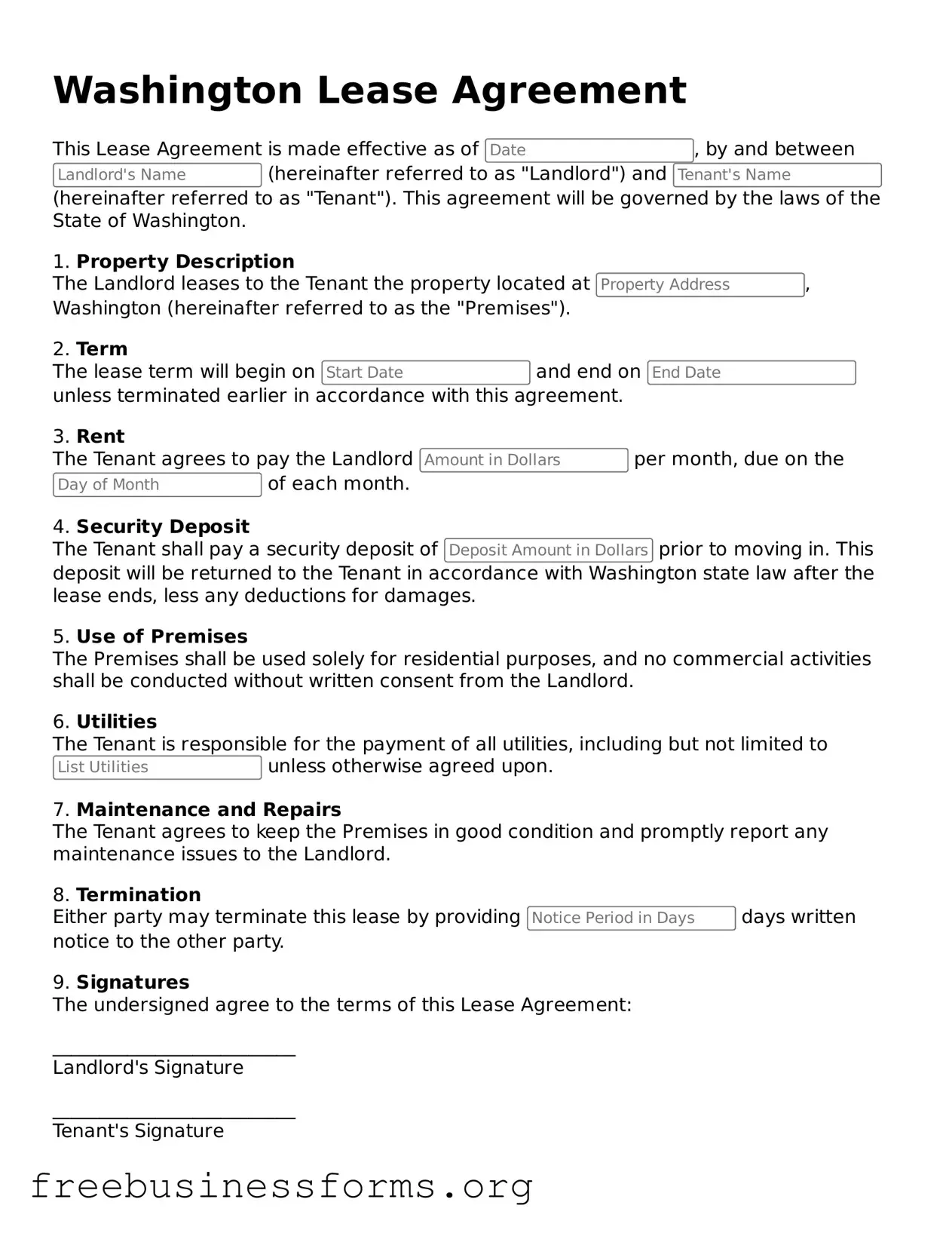Blank Lease Agreement Template for Washington
The Washington Lease Agreement form is a legal document that outlines the terms and conditions between a landlord and a tenant for renting residential or commercial property in Washington State. This form serves to protect the rights and responsibilities of both parties, ensuring a clear understanding of the lease terms. By using this agreement, individuals can foster a positive rental experience while minimizing potential disputes.
Open Form Here
